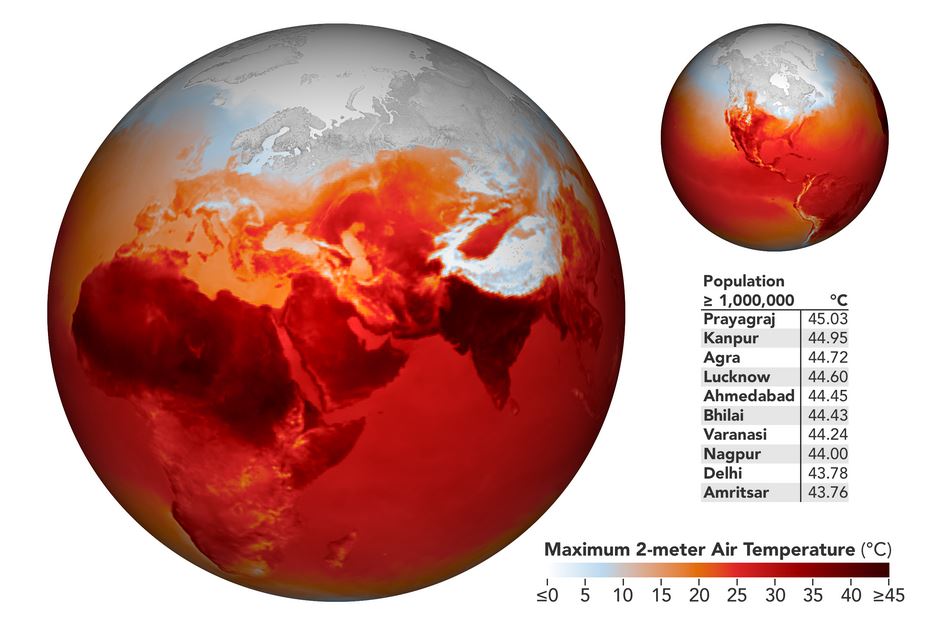Context:
India is gripped in the wrath of a long spell of heatwaves that too in the early month of April.

Relevance:
GS III- Environment (Climate change)
Dimensions of the Article:
- About Heat Wave
- Criteria for Heat Waves
- Health Impacts
About Heat Wave
- A heat wave is a period of abnormally high temperatures, more than the normal maximum temperature that occurs during the summer season in the North-Western and South Central parts of India.
- Heat waves typically occur between March and June, and in some rare cases even extend till July.
- Higher daily peak temperatures and longer, more intense heat waves are becoming increasingly frequent globally due to climate change.
Criteria for Heat Waves
- The heat wave is considered when the maximum temperature of a station reaches at least 40°C for Plains and at least 30°C for Hilly regions.
- If the normal maximum temperature of a station is less than or equal to 40°C, then an increase of 5°C to 6°C from the normal temperature is considered to be heat wave condition.
- Further, an increase of 7°C or more from the normal temperature is considered as severe heat wave condition.
- If the normal maximum temperature of a station is more than 40°C, then an increase of 4°C to 5°C from the normal temperature is considered to be heat wave condition. Further, an increase of 6°C or more is considered as severe heat wave condition.
- Additionally, if the actual maximum temperature remains 45°C or more irrespective of normal maximum temperature, a heat wave is declared.
Health Impacts
- The health impacts of Heat Waves typically involve dehydration, heat cramps, heat exhaustion and/or heat stroke.
- It also causes heat cramps, fatigue, weakness, dizziness, headache, nausea, vomiting, muscle cramps and sweating.
- The extreme temperatures and resultant atmospheric conditions adversely affect people living in these regions as they cause physiological stress, sometimes resulting in death.
Source: The Hindu




